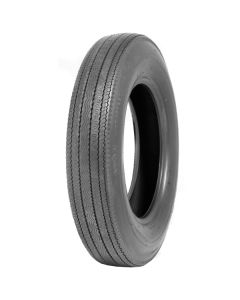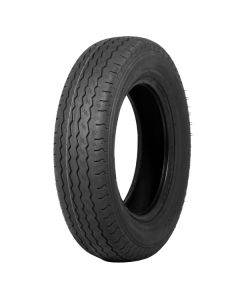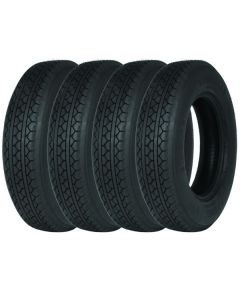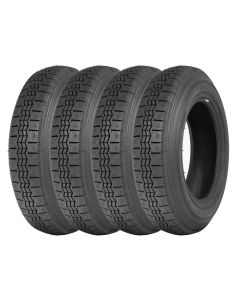Bristol 403 Tyres
Bristol 403 1953–1955
- The Bristol 403 fitted 600x16 crossply tyres, of which we would suggest the 6.00-16 PIRELLI STELLA BIANCA. These would be the best crossply tyres.
- Because modern roads have so many dual carriageways and motorways, we find ourselves cruising at higher speeds for longer periods of time than were possible when the Bristol 403 was built, using Radial Tyres is something many classic car owners want to do, and fitting a period radial will not spoil the handling.
- Longstone Classic Tyres would suggest fitting the 185 VR 16 PIRELLI CINTURATO CA67 as it will really suit the Bristol 403.
- We suggest fitting the Michelin 16 F RET innertube in your Bristol 403 tyres.
- For an unbiased view of the 16" tyres available, please click here for an article which appeared in the Maserati Club magazine.

1954 Bristol 403
Classic Tyres Explainedd
History of the Bristol 403
The 403 was the third of five Bristol series powered by the BMW-derived pushrod straight-six engine. In 1953, it succeeded the Bristol 401 and 402 and remained in production for two years. It had substantially the same look as the 401 but several mechanical advancements over that model. The 1971 cc six-cylinder engine was changed with larger valves and larger main bearings with a diameter of 54 mm as opposed to 51 mm on the 400 and 401, increasing power output to 100 horsepower as opposed to 85 hp on the 401. The 403's acceleration was noticeably enhanced, reaching 60 miles per hour in 13.4 seconds as opposed to 16.4 seconds for the 401. The highest speed of the 403 was 104 miles per hour.
Bristol Cars

aviation market. Bristol served well during the two world wars. In the second, Bristol produced over 14,000 aircraft including the Blenheim Fighter Bomber.
After the war in 1945 under the leadership of Sir George White, the company decided to use up surplus engineering and production capacity by small scale manufacturing of high-performance sports cars. The first of the Bristol cars was the 400. The 400 along with other fledgling cars got some of their stylingfrom pre war BMWs. These cars were built in 1946 and quickly gained an enviable reputation. The cars ran on pre war 2 litre engines that were heavily developed and eventually built by the engine division of the aeroplane company. To this day Bristol cars are hand built to an extremely high standard that is hard to beat.

The 401 and 402 drophead shortly followed. Entering the 50's Bristol brought with it the 403 and 404, the former being a more powerful variant of the 401 whilst the latter was a short wheelbase, fixed head coupe. The Bristol 404 was the first British designed car to fit the radical Michelin X radial tyre in early 1954, once more marking the company out as a setter of trends. Also in 1954, a 405 that was based on the 404 was produced only with 4 doors and a longer wheelbase. The shape that took them through to the late 1970s (in various guises) was the 406. Bristol kept the same shape but subtle styling changes and face-lifts helped keep the shape modern. At one point the company dropped an adaptation of Chryslers V8 power plant into the car. All of these modifications amalgamated into the 411 that was produced in 1969 and stayed in production through to 1975.
By 1960 due to political pressure the aviation division of the company was forced to merge with other aviation companies to form the British aircraft corporation. It was in the same year that to ensure its identity and autonomy Bristol Cars Ltd was acquired by former racing driver Tony Crook and the grandson of founder Sir George White, only 3 years later Tony Crook became sole owner and director of the company.
By the end of the 70's Bristol had new styling to reflect the period and this car was the 603 saloon, and in the 1980's a turbocharged Beaufighter (a name that came from the aviation days of the company in WWII). By the mid 80's Bristol dropped the numbers in favour of names of the past, for example Britannia, Brigand and the Blenheim.

Although production numbers are less than 9,000 Bristol has competed with their cars under public scrutiny at places such as Le Mans in 1953/54/and 55 to mention just one. The company is still based in Filton and a model of any vintage can still be taken to the company for complete restoration and can supply their customers with any parts required right back to the company's earliest cars.



































